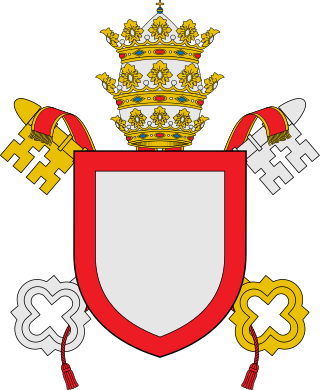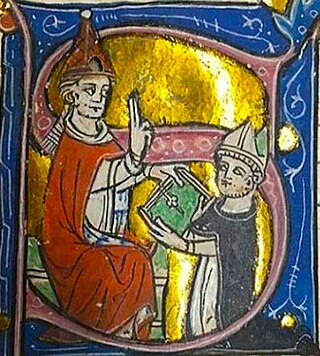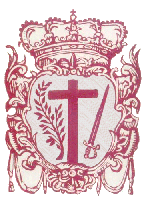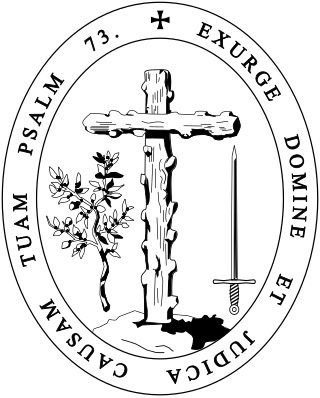
The Inquisition was a Catholic judicial procedure where the ecclesiastical judges could initiate, investigate and try cases in their jurisdiction. Popularly it became the name for various medieval and reformation-era State-organized tribunals whose aim was to combat heresy, apostasy, blasphemy, witchcraft, and other dangers, using this procedure. Studies of the records have found that the overwhelming majority of sentences consisted of penances, but convictions of unrepentant heresy were handed over to the secular courts for the application of local law, which generally resulted in execution or life imprisonment. If the accused was known to be lying, a single short application of non-maiming torture was allowed, to corroborate evidence.

The Medieval Inquisition was a series of Inquisitions from around 1184, including the Episcopal Inquisition (1184–1230s) and later the Papal Inquisition (1230s). The Medieval Inquisition was established in response to movements considered apostate or heretical to Roman Catholicism, in particular Catharism and Waldensians in Southern France and Northern Italy. These were the first movements of many inquisitions that would follow.

The Malleus Maleficarum, usually translated as the Hammer of Witches, is the best known treatise about witchcraft. It was written by the German Catholic clergyman Heinrich Kramer and first published in the German city of Speyer in 1486. Some describe it as the compendium of literature in demonology of the 15th century. Kramer presented his own views as the Roman Catholic Church's position.

Pope Benedict XII, born Jacques Fournier, was a cardinal and inquisitor, later head of the Catholic Church from 30 December 1334 to his death, in April 1342. He was the third Avignon pope and reformed monastic orders and opposed nepotism. Unable to remove his capital to Rome or Bologna, Benedict started the great palace at Avignon. He settled the beatific vision controversy of Pope John XXII with the bull Benedictus Deus, which stated that souls may attain the "fullness of the beatific vision" before the Last Judgment. Despite many diplomatic attempts with Emperor Louis IV to resolve their differences, Benedict failed to bring the Holy Roman Empire back under papal dominance. He died 25 April 1342 and was buried in Avignon.

Pope Gregory IX was head of the Catholic Church and the ruler of the Papal States from 19 March 1227 until his death in 1241. He is known for issuing the Decretales and instituting the Papal Inquisition, in response to the failures of the episcopal inquisitions established during the time of Pope Lucius III, by means of the papal bull Ad abolendam, issued in 1184.

Pope Innocent IV, born Sinibaldo Fieschi, was head of the Catholic Church and ruler of the Papal States from 25 June 1243 to his death in 1254.
The Roman Inquisition, formally Suprema Congregatio Sanctae Romanae et Universalis Inquisitionis, was a system of partisan tribunals developed by the Holy See of the Catholic Church, during the second half of the 16th century, responsible for prosecuting individuals accused of a wide array of crimes according to Catholic law and doctrine, relating to Catholic religious life or alternative religious or secular beliefs. It was established in 1542 by the leader of the Catholic Church, Pope Paul III. In the period after the Medieval Inquisition, it was one of three different manifestations of the wider Catholic Inquisition, the other two being the Spanish Inquisition and Portuguese Inquisition.

Peter of Verona, also known as Saint Peter Martyr and Saint Peter of Verona, was a 13th-century Italian Catholic priest. He was a Dominican friar and a celebrated preacher. He served as Inquisitor in Lombardy, was killed by an assassin, and was canonized as a Catholic saint 11 months after his death, making this the fastest canonization in history.

Bernard Gui, also known as Bernardo Gui or Bernardus Guidonis, was a Limousin Dominican friar, Bishop of Lodève, and a papal inquisitor during the later stages of the Medieval Inquisition.

The Portuguese Inquisition, officially known as the General Council of the Holy Office of the Inquisition in Portugal, was formally established in Portugal in 1536 at the request of King John III. Although King Manuel I had asked for the installation of the Inquisition in 1515 to fulfill the commitment of his marriage with Maria of Aragon, it was only after his death that Pope Paul III acquiesced. In the period after the Medieval Inquisition, it was one of three different manifestations of the wider Christian Inquisition, along with the Spanish Inquisition and Roman Inquisition. The Goa Inquisition was an extension of the Portuguese Inquisition in colonial-era Portuguese India. The Portuguese Inquisition was terminated in 1821.
The historical revision of the Inquisition is a historiographical process that started to emerge in the 1970s, with the opening of formerly closed archives, the development of new historical methodologies, and, in Spain, the death of the ruling dictator Francisco Franco in 1975. New works of historical revisionism changed our knowledge of the history of the Roman and Spanish Inquisitions.

The Tribunal of the Holy Office of the Inquisition was established in 1478 by the Catholic Monarchs, King Ferdinand II of Aragon and Queen Isabella I of Castile. It began toward the end of the Reconquista and aimed to maintain Catholic orthodoxy in their kingdoms and replace the Medieval Inquisition, which was under papal control. Along with the Roman Inquisition and the Portuguese Inquisition, it became the most substantive of the three different manifestations of the wider Catholic Inquisition.
Ad abolendam was a decretal and bull of Pope Lucius III, written at Verona and issued 4 November 1184. It was issued after the Council of Verona settled some jurisdictional differences between the Papacy and Frederick I, Holy Roman Emperor. The document prescribes measures to uproot heresy and sparked the efforts which culminated in the Albigensian Crusade and the Inquisitions. Its chief aim was the complete abolition of Christian heresy.
Vox in Rama is a decretal sent by Pope Gregory IX in June 1233 condemning the heresy of Luciferianism said to be rife in Germany, and authorizing the preaching of a crusade against it. Copies of the letter were sent to Emperor Frederick II, King Henry (VII) of Germany, Archbishop Siegfried III of Mainz, his suffragans, Bishop Conrad II of Hildesheim and the preacher Konrad von Marburg. The copies are dated to 11, 13 and 14 June.

Bernard Délicieux was a Spiritual Franciscan friar who resisted the Inquisition in Carcassonne and Languedoc region of southern France.
Bernard de Caux, or in Latin Bernardo or Bernardus de Caucio, was a Dominican friar and medieval inquisitor. His activities mainly took place in the region of the County of Toulouse between 1243 and 1249. He originated the investigation processes and his witness interrogations are recorded in a 13th-century transcribed manuscript preserved in the library of Toulouse.
The Venetian Inquisition, formally the Holy Office, was the tribunal established jointly by the Venetian government and the Catholic Church to repress heresy throughout the Republic of Venice. The inquisition also intervened in cases of sacrilege, apostasy, prohibited books, superstition, and witchcraft. It was established in the 16th-century and was abolished in 1797.
Internationally, nonreligious people are less likely to support the use of torture against suspected terrorists than Christians, Buddhists, Hindus, Jews, and the adherents of other religions. With the exception of Muslim/African cultures who are most opposed to the use of torture.
The German Inquisition was established by Pope Gregory IX in 1231, and the first inquisitor was appointed in the territory of Germany. In the second half of the 14th century, permanent structures of the Inquisition were organized in Germany, which, with the exception of one tribunal, survived only until the time of the Reformation in the first half of the 16th century. In combating heretics in Germany, the Inquisition always played a secondary role compared to the ecclesiastical courts.
France was one of the first countries where the papal inquisition was established in the 13th century. This ecclesiastical judicial institution was created to combat heresies. The southern region of France, Languedoc, was the primary center of inquisition activity in Europe until the mid-14th century. Most of the preserved sources concerning the inquisition originate from this region. However, the history of the French Inquisition spans until the end of the 17th century and also encompasses other areas of the country.











